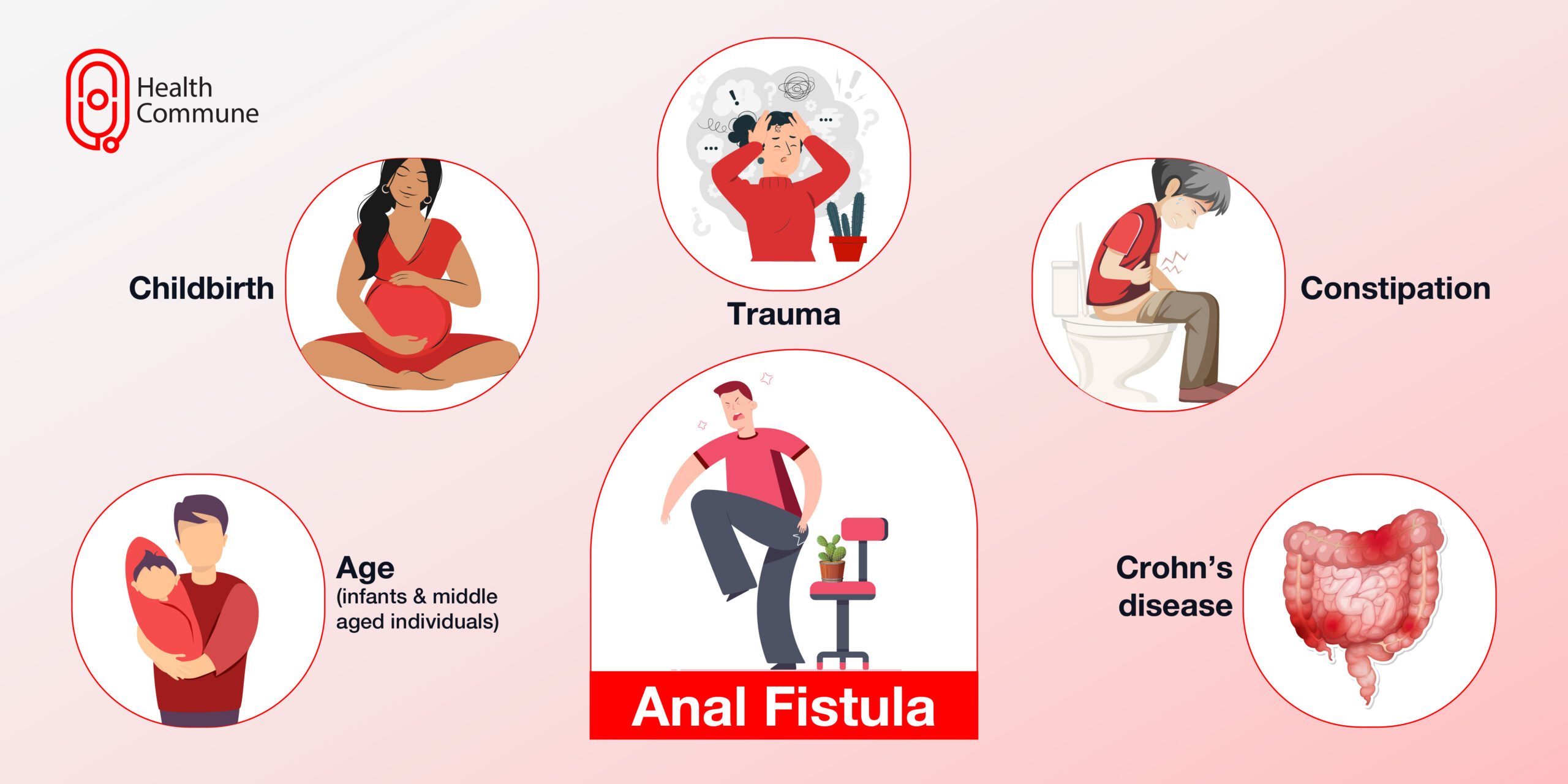What is an anal fistula?
What are the common causes of anal fistula?
These are typically formed when a pre-existing infection in the anal region (pus-filled cavity called an abscess) bursts spontaneously. Some other causes include:
- Tuberculosis
- Inflammatory bowel disease (Crohn’s disease, ulcerative colitis)
- Trauma
- Hidradenitis suppurativa, a painful skin condition which causes the formation of painful bumps under your skin
- Sexually transmitted infections such as HIV
- Cancer
What are the risk factors of anal fistulas?
Some conditions that can put you at a greater risk of developing this condition are:
- Constipation
- Childbirth
- Crohn’s disease
- Anal intercourse
- Age (infants and middle-aged individuals)
What are some symptoms of anal fistulas?
You can experience the following symptoms:
- Pain and swelling around the anus
- Pus or bleeding from your anus
- Pain while passing motions
- Irritation, redness and burning in the anal area
- Fever, in case of an abscess

How is an anal fistula diagnosed?
Your doctor will ask you about your symptoms and do a gentle examination of the area around the anus. They can also insert their finger inside your anus to check for its opening. In case of any suspected underlying condition, they may further carry out:
- Ultrasound or MRI: This is done to check the location and depth
- Anoscopy: A short device is inserted into the anus to visualise the anus and the lower rectum
- Proctoscopy: A short rigid tube is inserted into the anus to inspect the anus and the rectum
- Colonoscopy: In case your doctor suspects Crohn’s disease or ulcerative colitis, they can order a colonoscopy, where a thin long flexible tube with an attached camera is inserted through your anus to visualise your large intestines
- Chest X-ray: This is done in case your doctor suspects you have tuberculosis
- Biopsy: A part of the tissue around the area involved is removed and taken for examination
- Blood tests: This is ordered to detect any related underlying conditions you may have
How do you treat an anal fistula?
Anal fistulas rarely heal on their own, and surgery is typically recommended. Procedures include:
- Fistulectomy: This is usually done under general or spinal anaesthesia. Your surgeon will pass a probe through the fistula and remove it, along with all the unhealthy tissue around it
- Fistulotomy: In this outpatient procedure, a probe is passed through the fistula and it’s cut open and laid flat. It’s then allowed to heal on its own
- Seton technique: A silk or linen thread is passed through the fistula and secured with a tie. This is kept for approximately 3 months and it promotes healing and scar formation
Are there any side effects post-surgery?
Very rarely, you may experience side effects that usually resolve on their own after a few weeks. These include:
- Minor faecal incontinence, where you may temporarily lose control over your bowel movements
- Infections
- Recurrence
What are some complications of anal fistulas?
Complications include:
- Persistent pain
- Bleeding
- Faecal incontinence
- Skin infections
What happens if an anal fistula is untreated?
Can an anal fistula return after surgery?
How can I naturally prevent anal fistulas?
You can follow specific dietary and lifestyle changes such as:
- Keep your anal region as clean and dry as possible
- Stay well hydrated
- Consume a fibre-rich diet with lots of fresh fruits and vegetables, wholewheat grains such as brown rice, oats, ragi, millets etc.
- Avoid straining while passing motion
- Regularly exercise at least 2.5 hours a week


